-
Posts
527 -
Joined
-
Last visited
-
Days Won
8
Content Type
Profiles
Forums
Gallery
Downloads
Blogs
Events
Store
Aircraft
Resources
Tutorials
Articles
Classifieds
Movies
Books
Community Map
Quizzes
Posts posted by flyvulcan
-
-
Pylon500, when is "Little Racer" going to grace the skies (theoretically or should I say wishfully)?
-
Old Koreelah,
You are correct, under certain conditions, the allowable speed range can be quite small, or indeed the high and low speed limits could be the same figure. However, most pilots avoid the situation of flying with such a small margin. Normally, the only time most would consider this practise is when flying for range, i.e. fuel is critical.
By way of explanation, the upper limit of the speed range for a typical jet is set by the manufacturer and is normally expressed as either an IAS or Mach Number. The high speed limit is set for any number of considerations including down low, windscreen/birdstrike limits, up a little higher it may be structural and at high level, it could be limited by compressibility or critical mach number (where airflow at some point on the wing is supersonic). G loading can effect critical mach number (an increased g loading increases the speed of the airflow over the upper surface of the wing, potentially making it supersonic) so a margin has to be allowed at high mach numbers to prevent reaching Mcrit during turns, in turbulence etc. when the aircraft might experience increased g loading.
The low speed limit is essentially the conventional stall as we all know it.
Now a typical airliner (say an A320) might have a clean stall of around 160kias near sea level but this increases with altitude and of course, with increasing weight. Up at 39000' and at the maximum weight to achieve that altitude, there may only be a 20 knot (or less) indicated split between the high speed limit and the low speed stall. On other aircraft, this operating range can be even smaller, down to just a few knots which means that any sort of disturbance could put the aircraft over/under the limits, i.e. if flying into a cloud that is cooler than the surrounding air mass, the mach number would increase momentarily putting the speed over the upper limit. Conversely, flying into some windshear where 10 knots is lost could put the speed under the low speed stall speed.
This situation is normally avoided by flying at a lower altitude where the margin is greater and waiting until enough fuel has been burnt off (so weight is reduced) before climbing to the next cruise altitude where a safe (or comfortable) margin would then exist.
I hope this brief explanation helps.
With respect to "making up time" in a jet, on a short sector (say under 2 hours), there is little scope to make up time. Typically, cruise speed can be increased by around 2% (so maybe a 4 minute saving over 2 hours) and a high speed climb/descent might save another 2 minutes. Selecting a cruise level that gives the best groundspeed (so TAS/wind combo), combined with direct tracking and traffic holding avoidance (ATC assisted) can help with making up time, but again, over a short sector, not much can be done. Over longer sectors, the percentage improvements remain the same but because of the length of the sector, a significant number of minutes can be "made up" (normally at the expense of fuel though which airlines are not that keen on).
Cheers,
Dave
-
 5
5
-
-
I attended a Flight Safety conference a while back where various incidents were analysed. One was as follows:It's always very confusing when there is a failure with two capable pilots on board. However it does happen more often than it should, which may highlight the 'who's actually flying the aircraft ?' scenero, and the dangers therein.Pilot in command, or 'flying pilot' must be established at all times, and this is even more important should things go sour with an engine failure etc. at the lower altitudes, or even with re-establishing the correct airspeed profile, should the airspeed be allowed to decay at critical times during the approach or departure.Compounding this problem is the known danger area in operating a new or unfamiliar aircraft type. This is a well recognized, and known danger area even for the experienced pilot.............................................................Maj...
Scenario: B777 on 500' final approach to land in perfect conditions. New to type copilot is flying. Aircraft is high on profile and aim point is long. Captain prompts copilot twice after going below 1500' to increase rate of descent to fix glidepath. At 500' in exhasperation, captain grabs control column, pushes forward and sets up high rate of descent to fix glidepath and aim point. Aircraft proceeds on this vector with speed being nicely controlled by autothrottle until aircraft impacts runway, with no flare, pushing nosegear up around 3' and buckling a significant amount of forward fuselage.
The copilot assumed that when the captain pushed on the control colum that the captain had taken control. Captain advises he never took control, he simply assisted the copilot to act decisively in fixing flight profile. End result, no-one was flying the aircraft after the positive intervention by the captain.
Captain - 13000 hours, copilot - 500 hours
Lesson, always be clear about who is actually in control of the aircraft.
-
Hi Brett,
The current distance from the front of the prop flange to firewall in the Bug is 980mm so with some creative cowl work, we could possibly squeeze in your engine. Can the oil sump be remotely located or is it necessary for it to be on the base of the engine where it is currently located (we have a centre keel that the current engine is mounted to using bed type mounts)? Can the depth of the exhaust be reduced at all to reduce the overall length of the engine (even 30mm would help)?
FYI, fuel capacity of the Bug is 90 litres and with your engine at 10,000' should probably TAS out at around 200ktas for cruise.
Brett, you are right in considering Specific Air/Ground Range (SAR/SGR) as well as the cost of hotels/landing fees/food etc. that can result in significant additional costs on top of fuel costs.
UL Power engines had been looked at thanks Damkia. We are trying hard to find something inline to keep the cowling narrow but at the end of the day, we may have to go with something that has opposed cylinders and accept that the current clean lines will be compromised.
The inline 110hp Simonini and 100hp Hirth 2 strokes can be made to fit but we are trying to get away from the 2 strokes.
We would really like a Turbine...
Cheers,
Dave
-
Thanks guys, I now have the Sauer on my watch list.
I've also been learning propellor theory on another forum that I participate in and the pro's/con's/reasons for a particular number of blades are being explained to me. With a prop diameter limit of 54" for the Bug, getting the right prop to suit the Bug will take some evaluation, but fortunately, I have the help of some experienced prop makers.
Cheers,
Dave
PS Not having to worry about props is a great reason for going for a jet!

-
Hi Bryon,
The nose-gear cover is extremely draggy as it is now, according to those that have flown the Bug, so we expect it to do the job of airbrake as-is.
Cheers,
Dave
-
When we fly it, I'll let you know!! The red Bug that we have in the US was last flown 3 years ago when it had a partial engine failure of the AMW engine. The pilot got it down on 2 cylinders with the rear one having been cooked. While he had around 30 hours on the aircraft, he hasn't given us too many pilot reports on it's handling. He's really only given us the guidance that "it flies like any other aircraft and is quite responsive". Not much info really...Bug looks like it needs a four or five blade prop to me, how do you slow it down?We shall probably just need to give it an extra mile to slow down... Also, partially winding the nose-gear down would slow it down fairly quickly.
-
The original AMW engine in the Bug weighed in at 135 lbs installed including water cooling system. While Milt is installing the Jab3300 in his Bug, the approx 180 lbs is really too much. Ideally, we are looking for a sub-140 lbs installation but this simply may not be possible for a reliable solution and we may need to look at using the heavier engines in the production kit (and do the appropriate mods to incorporate a heavier engine installation). The Viking would be under consideration if we have to go for a heavier engine.
-
Hi Nev,
If anyone can point me in the direction of a suitable powerplant for the Bug, I'm all ears. We have a few under consideration but all of them are compromises on the original concept of a closely cowled 100hp 2 stroke.
We may still put the fairly bullet-proof Rotax 912/914 in it, but we've looked at all the 2 strokes (Hirth/Simonini etc.), the D-motor, Jabiru, AeroVee, etc. and we don't have a "perfect" engine yet for it. The main feature of the Bug design is it's capability for real speed (i.e. 200 knots) but to make the Bug a success, it must have a suitable, reliable, affordable powerplant.
We've looked at several rotary conversions but have not found a suitable one yet. If you know of any, please let me know in case we haven't yet seen that product. Bear in mind that engine bay space on the Bug is at a premium.
As for a prop, with the large speed range of the Bug (60 - 200kias), we are looking at IFA props to maximise it's performance potential. The existing props start running out of pitch at around 180 knots so we are definitely looking at IFA options for the "performance" Bug. A "regular" Bug would be ok with a fixed pitch prop up to around 180kias, but for those with the real need for speed, we will definitely be working with an IFA prop maker to provide an optimum performance prop for those who are pepared to pay the extra for more knots.
If Kingo's T62 conversion is viable and reliable, and we could organise for conversions to be made readily available (such as Helicycle do with their T62 conversions), it might be a nice option to be able to offer for the Bug.
This is why I am watching Kingo's conversion with interest and would be keen to see it in a Bug, once it had a history of safe operation in a gyro.
Cheers,
Dave
-
If my personal one works as anticipated, yes Howie, we will be looking at making it available as a kit, given that we already have the molds and tooling for most components. Bear in mind that it is intended to be a purely fun machine, not at all practical. And the engines are thirsty!! However, with a completed price of under that of many LSA's, there may be some people that are interested...
The wings should be finished in 3 weeks, the tailplane is complete and mounted and I have some big build sessions on the fuselage coming up. By Christmas, it will really be looking like the real McCoy. Keep an eye on my threads here and here for updates on progress.
Cheers,
Dave
-
It is called a Lightning Bug. It was designed and released as a kit in the US in the early '90s but the designer finished up production after 16 kits due to the fear of liability.
Myself and a mate have purchased the remaining kits/components/molds/tooling etc. and rights for the Bug from it's former owner with the intention to refine and release the Bug in kit form. We have the Australian demonstrator under construction in Adelaide and that one is receiving a Jab3300 (tin hat on!!) which should be flying next year.
The one in the photo is our US demonstrator, but we are in the process of selecting a suitable powerplant for it. Once selected and fitted, we will thoroughly test the aircraft so that we can release accurate and verifiable data on it's performance. It has wheelpants yet to be fitted to finish off the cleaning up of the airframe.
Here is another Bug photo of one that has flown in the US:
I used a Bug kit as the basis for my Komet jet project which could be the second product off our production line, given the large commonality of parts.
Cheers,
Dave
-
How long is it, Brett? The engine that is, from prop flange to aft of the exhaust? Could you redo the exhaust for tractor configuration?
After successful airborne testing on a gyro and if it physically fitted, perhaps you might be interested in fitting it into this actual aircraft:
You would be doing faster than 160 knots (normal top speed with 100hp 2 stroke is around 200kias with a Vne of 225) and it only has one seat.
We could come to some arrangement... It's ready to fly (done around 40 hours already), it just needs to be re-engined (we wont be flying it again with the AMW that's in it!)
Dave
-
There are some very silly people here making some very silly suggestions. I would ignore them if I was you.
Why don't you simply just take your Jab aboard as carry-on luggage? You might have to squish it up a bit for it to fit into the test unit. Once aboard, if you tethered the nosewheel by a long rope to the bowsprit of the liner and asked the Captain for all engines ahead full, you could practise your flying without even starting the engine. This solution has significant benefits in that you get to fly and save on fuel at the same time.

PS No offence intended for my esteemed silly colleagues!
-
-
Thanks Geoff for all the pics and feedback about the event. Your efforts are appreciated.
It is good to see all the Recreational Aviation Groups getting together and cooperating for the enjoyment of all. Let's hope this this cooperation continues and gains the support of those that were unable or chose not to attend.
Cheers,
Dave
-
But remember Mardy, she still has to phone her sister to make sure she's up for it also.Worst still, You have a perfect flying day so you set the alarm early to get to the airfield. The wife wakes up and looks at you with a look that says... Would you like a good reason to stay in Bed...????? Doh!Mardy

-
Thank goodness my Komet only needs 30 minutes fixed reserve. That will give me a still air range of, oh... around 60nm!

-
x 2 for what icebob has said. It is a great life, you make close and lifelong mates and is a time in one's life which is normally looked back on with fondness.
x 2 on icebob's PS as well.
Dave
-
Solomon, here is a bit about my experience. I started Pilot Course along with 26 course mates. My course was a RAAF Academy course so we had all finished a degree before pilot training and we were all 20/21yo when we started pilot training. There were many very intelligent people that I trained alongside. 14 of the 27 graduated as pilots 1 year later which is par for the course as the fail rate is/was around 50%. Surprisingly (or not), quite a number of the academic high achievers failed early. This included one that already had his PPL. However, while doing the CT4 training, the guys that did the best had a small amount of flying experience (maybe 25-30 hours).
Then we went to Macchis which really evened up the playing field. There was so much "new" stuff to learn and there was a hell of a lot of it as well!
The guys that got through had the following attributes:
- Reasonable coordination.
- The ability to learn and apply what was theoretically and practically taught to them. You don't need high intelligence but you do need aptitude.
- The ability to study effectively - there is so much to learn and so much to retain and so little time to do it.
- Determination - for an entire year, you cannot "give up". Two bad flights in a row and you are up for a scrub ride.
- Motivation - you really must want this (the best pilots on my course had wanted to be in the Air Force as long as they knew. They never wanted anything else).
- The ability to balance the high levels of stress with letting your hair down (Friday afternoons getting tanked in the mess, followed by a Saturday where you get out and ride your motorcycle, go waterskiing etc. and go chase girls/boys at the bars on Saturday night. Sunday, you get your head down and tail up studying for Mondays exam/flights.)
5 years after I graduated as a new pilot, I went back to instruct on Macchis. What a fantastic job! 8 years later, I left the RAAF and have enjoyed my civil flying since.
I would suggest the following:
- Try to solo (either GA or RAA) before your initial application through the recruiting centre. This shows motivation and also your willingness to pursue an aviation career.
- After your initial application, continue towards achieving around 25 hours of flight experience toward your PPL or RAA certificate. This will help give you a basic grounding for when you start course and will help in the early stages. Studying for the required civil exams will also assist you in getting back into the study frame of mind (it could have been a while since you have applied yourself academically).
- Study up about the RAAF current state and history.
BTW, I confirm as others have suggested that very few applicants start RAAF training with a CPL. I am aware of one around my time who started with 2500 hours and he made it through training but he was really motivated to fly military. Most RAAFies obtain their civil qualifications just before they resign to pursue a civil career. This is a good way to do things.
I hope this helps.
-
 4
4
- Reasonable coordination.
-
He's working on a turbofan at the moment. It will be a similar base engine but with a second spool and fan. Thrust will be up and SFC down, as expected. I have been waiting for this development from him for a while now but he had to get the production H150R out the door before he could move on to the next project.
Believe me, as soon as he has the turbofan available, it will go on my Komet!!
-
A Youtube video has just been uploaded that shows my intended engines. Check this out:
I have also been doing a lot of shopping lately in anticipation of some concerted building over the next few months. I now have a Dynon D10a EFIS, a 5 point aerobatic harness, an Infinity stick grip, a Ray Allen electric elevator trim system, a pitot static system, rudder pedals and I also have a large order in place for hardware, brake master cylinders, brake lines/fittings, rudder cable and fittings etc..
I also have some MF-12 wheelpants from Aircraft Spruce to fit.
I have photoshopped the canopy and wheelpants onto my fuselage so I can envision what the final fuselage will look like. Here's how it will look:
I feel that it will end up an attractive aircraft, but I am biased!!
I'll keep you updated with progress after the upcoming build sessions.
Cheers,
Dave
-
 2
2
-
-
I think you'll find that OME's reference to the Announcements Thread is in relation to him being offline for about 2 weeks and will be unable to supply anyone with anything (including rudder cable) during that time.
Cheers,
Dave
-
OME, that's what I understood also. Consequently, I'd prefer galvanised if it's available locally. I know I can get it through Aircraft Spruce US but 40' of it will weigh quite a bit (read "expensive shipping") so if it's available locally at a known and favourable price, I would go that option. So if you could price up 40' of galvanised (if you can source it that is), that would be great.
Dave
-
Thanks M61A1 and Gnarly.
Those Adelaide ones are really local so I'll check those out (along with using stainless in lieu of galvanised). If anyone happens to know categorically if stainless and galvanised are interchangeable for rudder cables, I'd appreciate the advice.
Cheers,
Dave


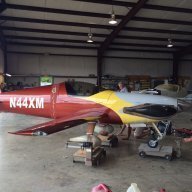
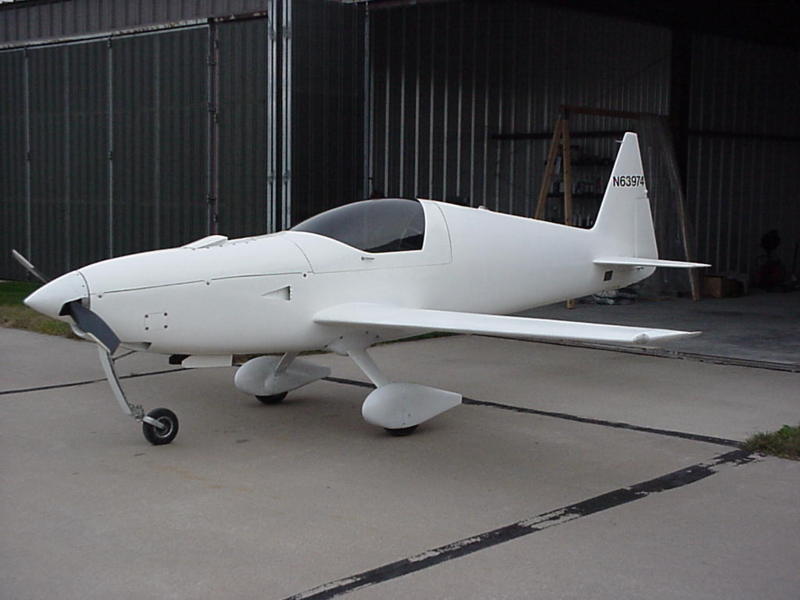
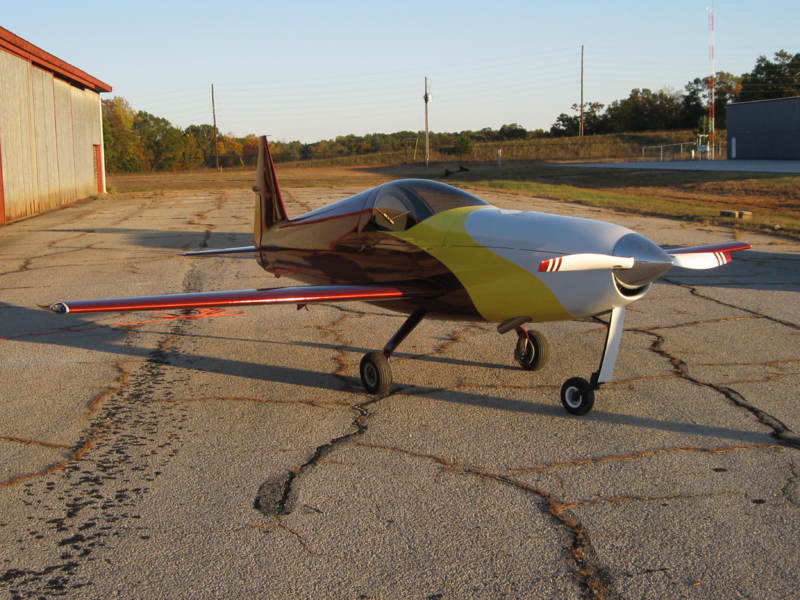
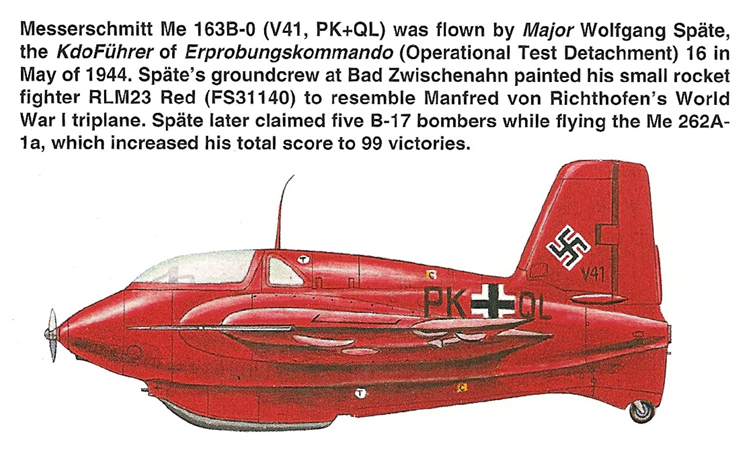
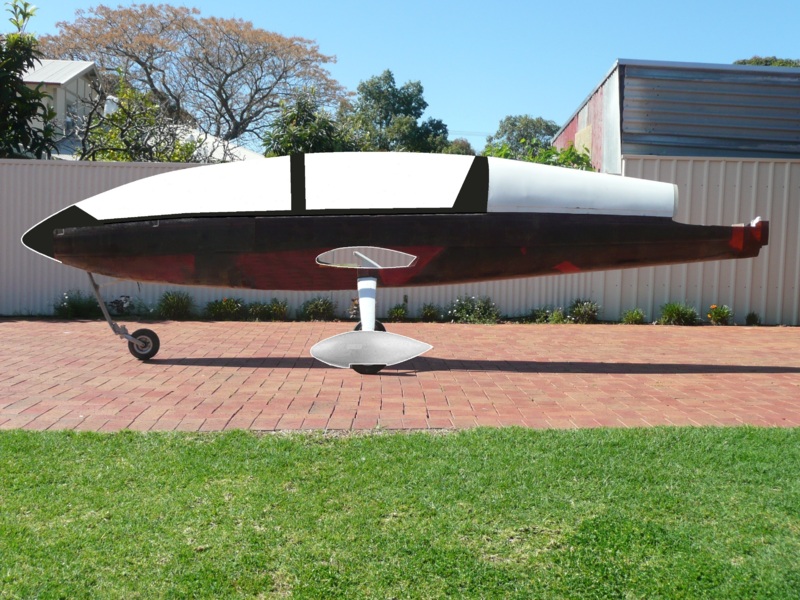
Turbine Ultralight anyone?
in AUS/NZ General Discussion
Posted
Larry's GT250 is for sale on Barnstormers right now. $11k. Is under 254 lbs so Pt103 in the US. I don't have 95.10 handy but are turboprops excluded?
BTW, when I phoned about Larry's aircraft the guy said Larry died during the last year... If this is true, that's a pity as he was very innovative and entertaining.